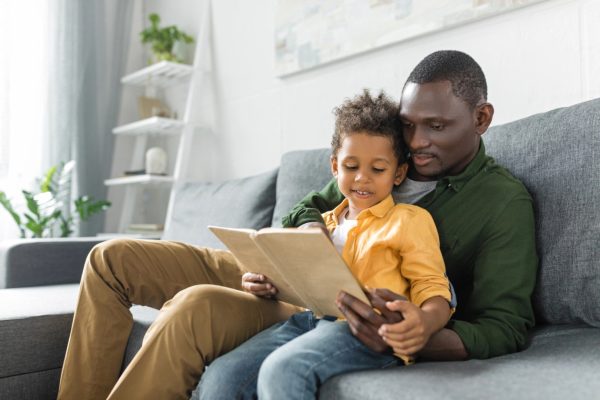Early Literacy: Helping Young Children Start Their Reading Journey
Early literacy is the foundation of a child’s academic future and overall development. Research shows that children who engage in reading from a young age develop stronger language, cognitive, and social skills, which contribute to academic success. As parents, teachers, and caregivers, there are many ways to support a child’s reading journey, both in structured settings and through playful, everyday activities. This blog post offers practical strategies and free resources to help you teach young children to read at home or in school.
Why Early Literacy Matters
- Language Development: Early exposure to reading expands a child’s vocabulary and helps them understand sentence structures, rhyme, and rhythm.
- Cognitive Skills: Reading helps children develop memory, problem-solving, and critical-thinking skills.
- Emotional Development: Stories introduce children to emotions and help them recognize and express their feelings.
- Social Skills: Books offer scenarios where children can learn empathy, patience, and the value of sharing.
Early literacy does not have to be formal or complex. It’s more about creating a rich environment of books, stories, conversations, and activities that engage a child’s curiosity.
Practical Tips for Teaching Early Literacy at Home or School
- Read Aloud Daily: Children benefit immensely from hearing stories. Choose a variety of books with rich language, vibrant illustrations, and engaging stories.
- Create a Reading Routine: Establishing a daily routine for reading reinforces its importance. This could be a bedtime story, a morning book session, or a reading circle in the classroom.
- Use Phonics Games: Phonics helps children understand the relationship between letters and sounds. Incorporate games that focus on rhyming, syllable counting, and initial sounds.
- Encourage Interaction with Books: Let children choose their books. Ask open-ended questions like, “What do you think will happen next?” to keep them engaged and encourage critical thinking.
- Incorporate Literacy into Daily Activities: Everyday moments, like cooking or grocery shopping, offer opportunities to introduce new words and practice reading.
Free Resources for Early Literacy
Here are some excellent free resources that offer printable materials, interactive games, and activities that foster early literacy:
- PBS Kids: The PBS Kids website has interactive reading games and videos featuring beloved characters like Daniel Tiger and Curious George. It includes activities for phonics, letter recognition, and storytelling.
- Starfall: Starfall offers a free section with interactive activities focused on letter sounds, word building, and beginner reading skills. It’s a favorite among teachers and parents alike for its engaging interface and variety of literacy games.
- Epic! Digital Library: While Epic is a paid service, they offer a free version for educators. Parents can use the free 30-day trial and gain access to thousands of children’s books. Epic includes audiobooks, read-to-me options, and leveled reading materials.
- Read Aloud Revival: This resource offers story time videos and lists of recommended books to foster a love for reading in young children. There’s also a podcast with advice for parents and educators.
- Storyline Online: Created by the SAG-AFTRA Foundation, this site features famous actors reading children’s books aloud. It’s a great tool for families without easy access to books or for educators looking to bring a story to life.
- Scholastic Learn at Home: Scholastic offers a collection of free online resources, including e-books, literacy activities, and printables. They provide resources for each grade level, including pre-kindergarten and kindergarten.
- Local Library Resources: Many libraries now offer e-book lending services and free literacy programs online. Check your local library’s website to see if they provide apps like Libby or Hoopla, which allow you to borrow children’s books and audiobooks for free.
- Van Buren ISD Recommended Resources: Here are some resources to help you and your child practice reading at home. Please feel free to print and use these resources.
Building a Home Literacy Environment
Even with limited resources, you can create a literacy-rich environment by using these simple strategies:
- Set Up a Reading Corner: Arrange a cozy, inviting reading space with books within easy reach. Include books on different topics and rotate them occasionally to keep children interested.
- Label Common Objects: Use sticky notes to label objects around the house or classroom, like “chair,” “table,” and “door.” This helps children recognize words and connect them to everyday items.
- Engage in Rhymes and Songs: Rhyming is an important phonological skill that builds a foundation for reading. Sing nursery rhymes and listen to children’s songs that play with sounds and language.
- Display the Alphabet and Word Cards: Visuals are powerful tools in early literacy. Display the alphabet and simple word cards around the room to make letters and words familiar.
Making Early Literacy Fun and Accessible
Literacy learning is most effective when children feel motivated, interested, and empowered. Embrace a variety of resources, create routines, and foster a supportive, encouraging atmosphere. Each child learns at their own pace, so be patient and celebrate small achievements along the way.


